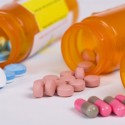Governments’ Drug-Abuse Costs Hit $468 Billion, Study Says
Government spending related to smoking and the abuse of alcohol and illegal drugs reached $468 billion in 2005, accounting for more than one-tenth of combined federal, state and local expenditures for all purposes, according to a new study.
Most abuse-related spending went toward direct health care costs for lung disease, cirrhosis and overdoses, for example, or for law enforcement expenses including incarceration, according to the report released Thursday by the National Center on Addiction and Substance Abuse, a private group at Columbia University. Just over 2 percent of the total went to prevention, treatment and addiction research. The study is the first to calculate abuse-related spending by all three levels of government.
“This is such a stunning misallocation of resources,” said Joseph A. Califano Jr., chairman of the center, referring to the lack of preventive measures. “It’s a commentary on the stigma attached to addictions and the failure of governments to make investments in the short run that would pay enormous dividends to taxpayers over time.”
Beyond resulting in poor health and crime, addictions and substance abuse — especially alcohol — are major underlying factors in other costly social problems like homelessness, domestic violence and child abuse.
Shifting money from hospitals and prisons to addiction treatment and research has never been politically easy, and it is all the harder now because the federal government and most states face large budget deficits and are cutting many key services. But Mr. Califano said that many preventive measures had rapid payoffs in medical and other expenses.
The work of the center and of Mr. Califano, who was a secretary of Health, Education and Welfare in the 1970s, have sometimes drawn fire from conservatives who put more emphasis on law enforcement than drug treatment and, on the other side, from groups who advocate loosening some drug laws and using needle exchanges and supervised addiction maintenance, as some European countries do, to reduce the personal and societal costs.
Ethan Nadelmann, director of the Drug Policy Alliance, a national group advocating legal reforms, said it was misleading for the report to lump together direct costs of tobacco, alcohol and drug abuse, like ill health, with expenses relating to enforcement of marijuana laws and prison. Many of the criminal justice costs, Mr. Nadelmann said, are not an inherent result of drug use but rather of policy choices to criminalize it.
“Still, the punch line of their report, that society should invest far more in prevention and treatment, makes total sense,” Mr. Nadelmann said.
The new report cites the antismoking campaigns of the last several decades as a promising model: education, higher taxes and restrictions on smoking zones have cut the incidence of smoking by close to half, saving billions in costs. It called for similar efforts to curb under-age drinking and excess alcohol consumption by adults, using higher taxes on beer, for example.
Even with tobacco, far more could be done, according to the report, which noted that only a small fraction of the more than $200 billion the states have received since 1998 under the Multi-State Tobacco Settlement had gone to prevention of smoking.
Federal studies show that the best drug treatment programs pay for themselves 12 times over, the report said, because patients who succeed have quick improvements in health and behavior.
The Columbia center called for legislation to require broader coverage of substance abuse treatment by health insurers. Mr. Califano said that as the new Obama administration tried to rein in spiraling health costs, deepening such coverage would be vital.
Some insurance companies have opposed such a sweeping requirement, arguing that the record of drug treatment is too spotty.
source: New York Times
